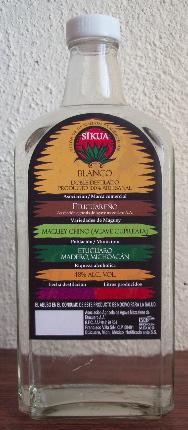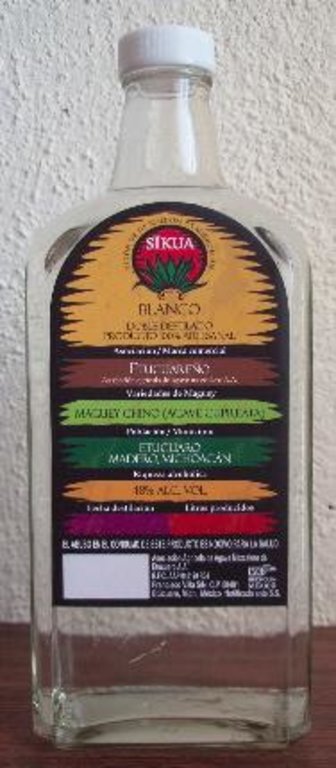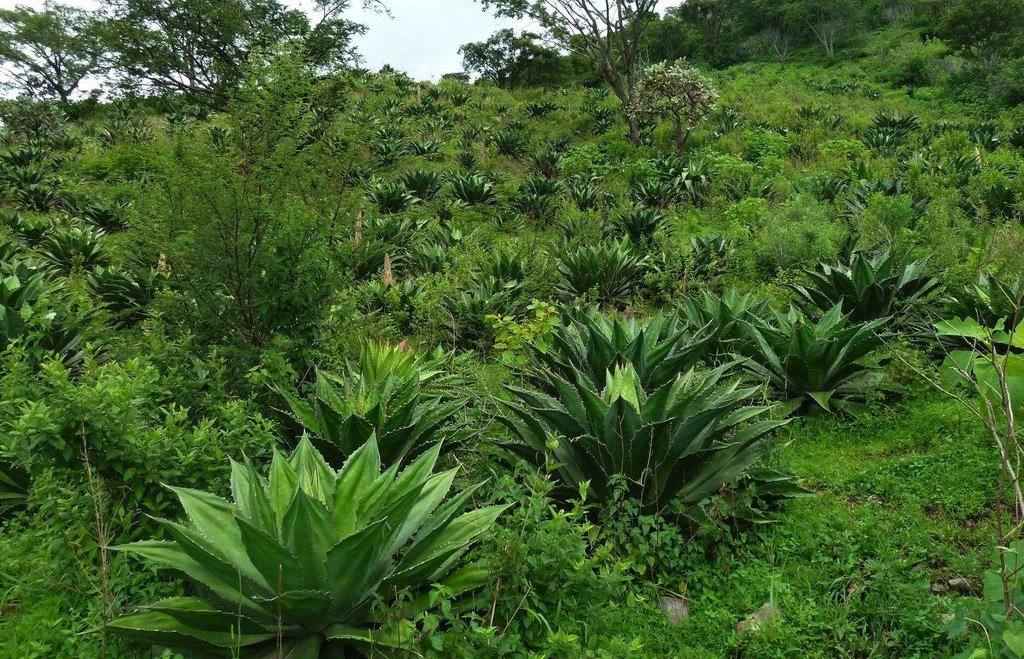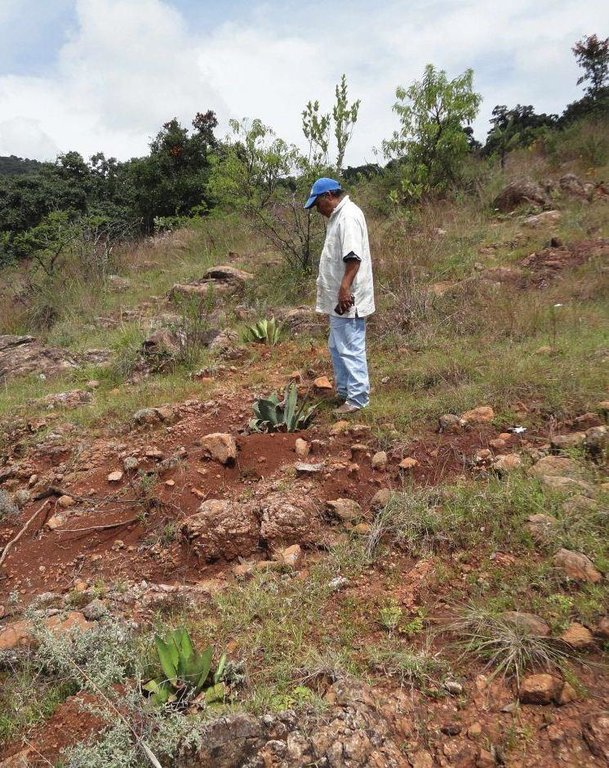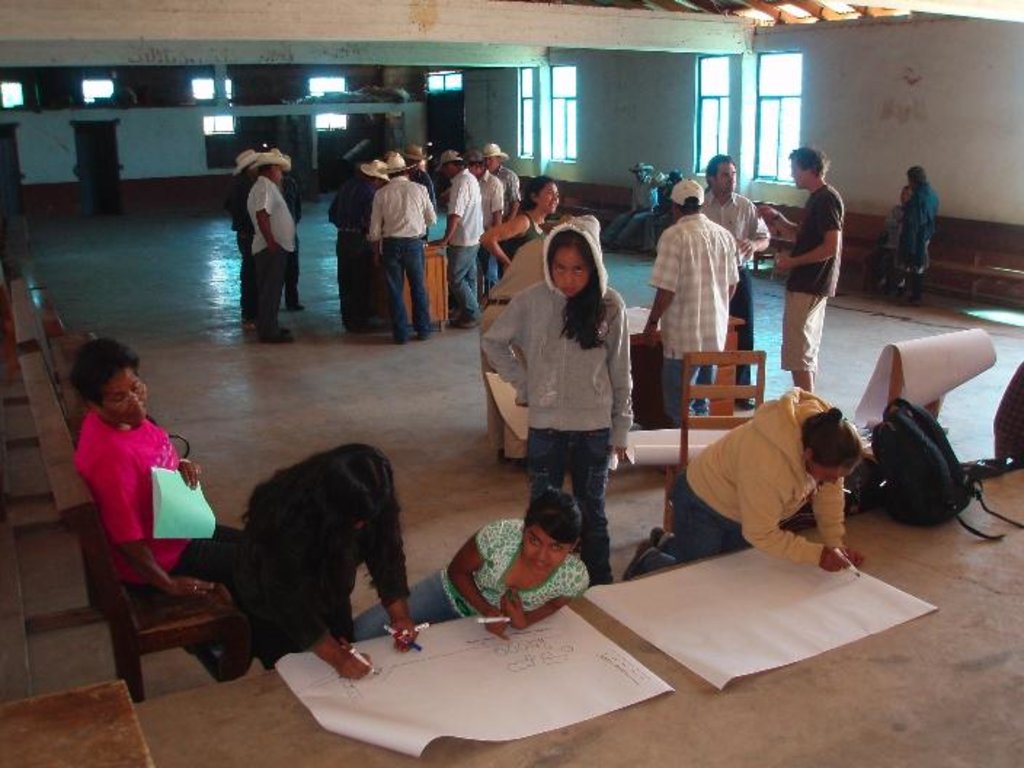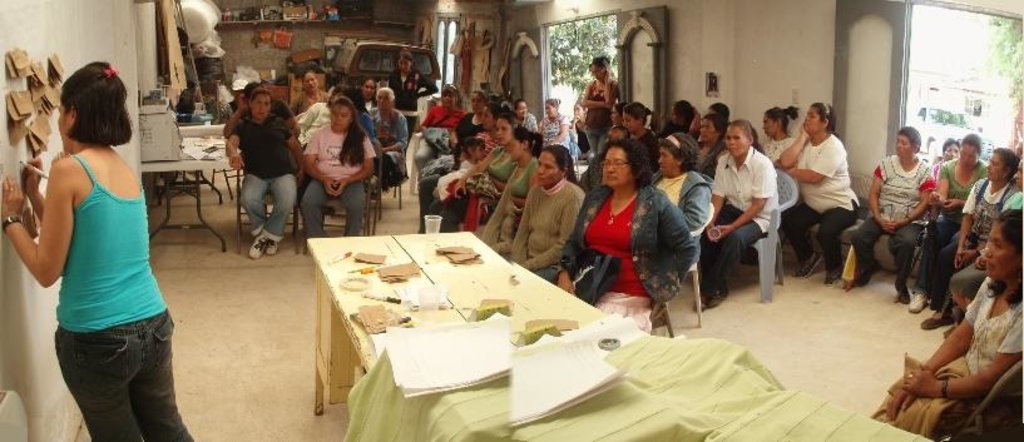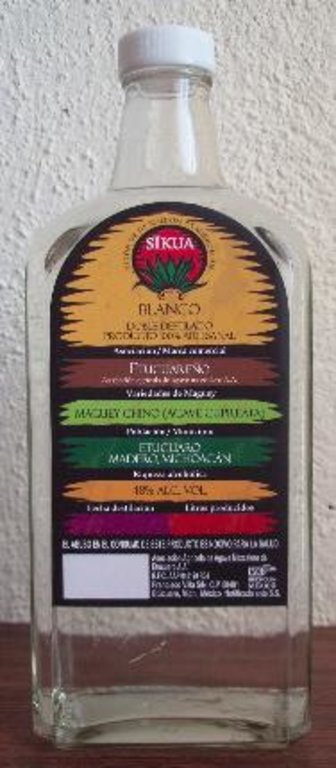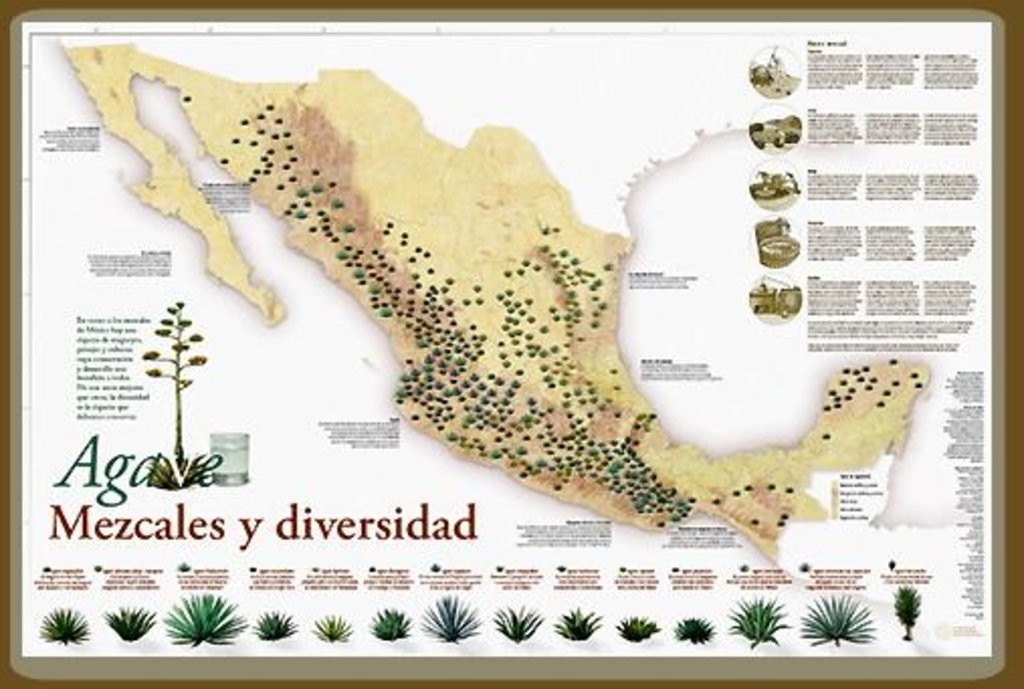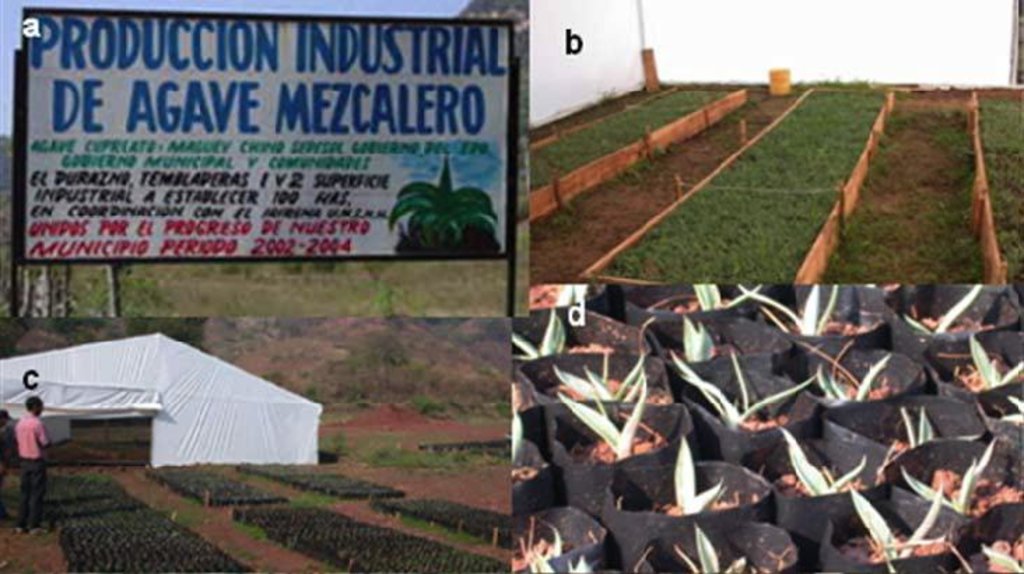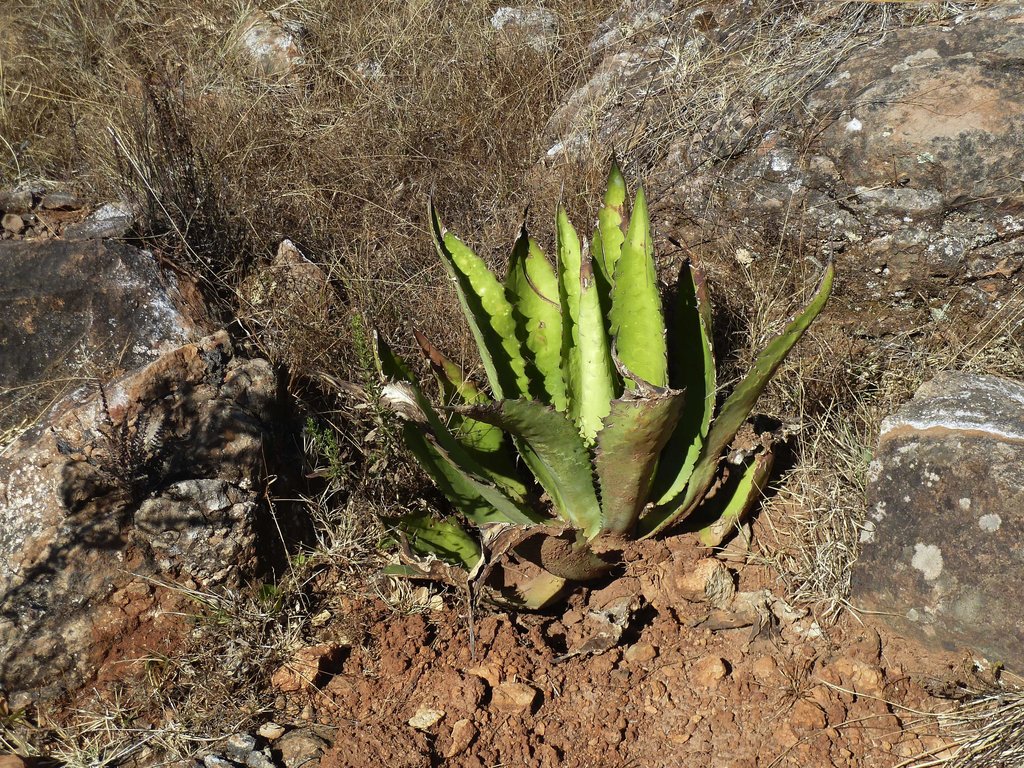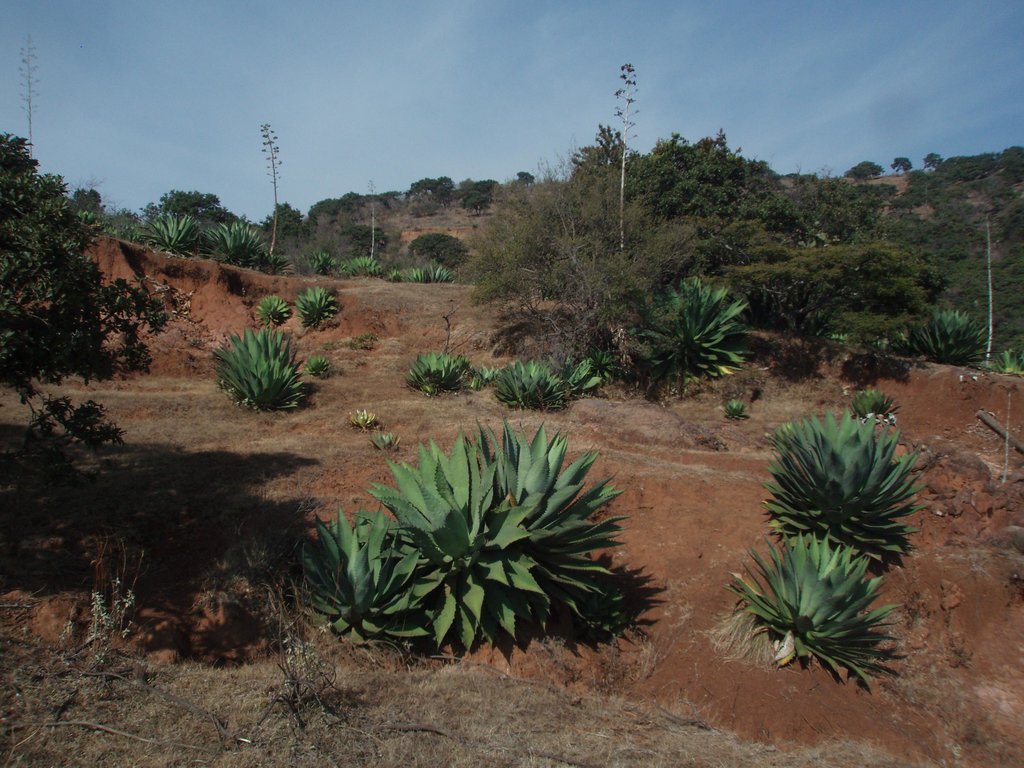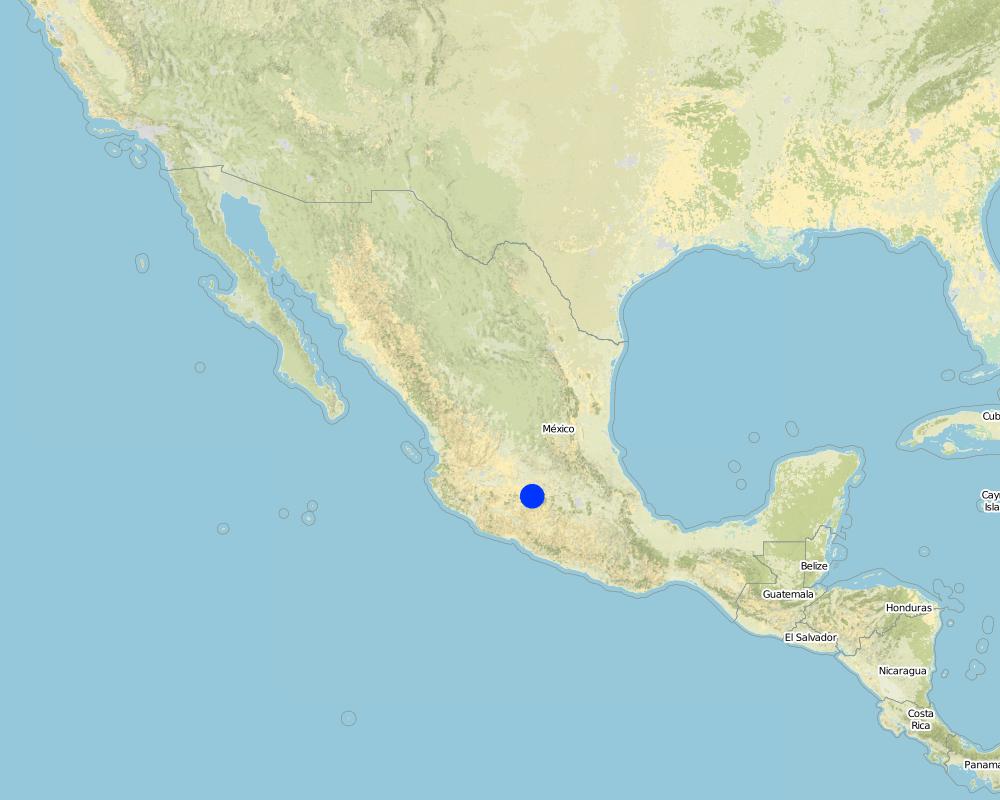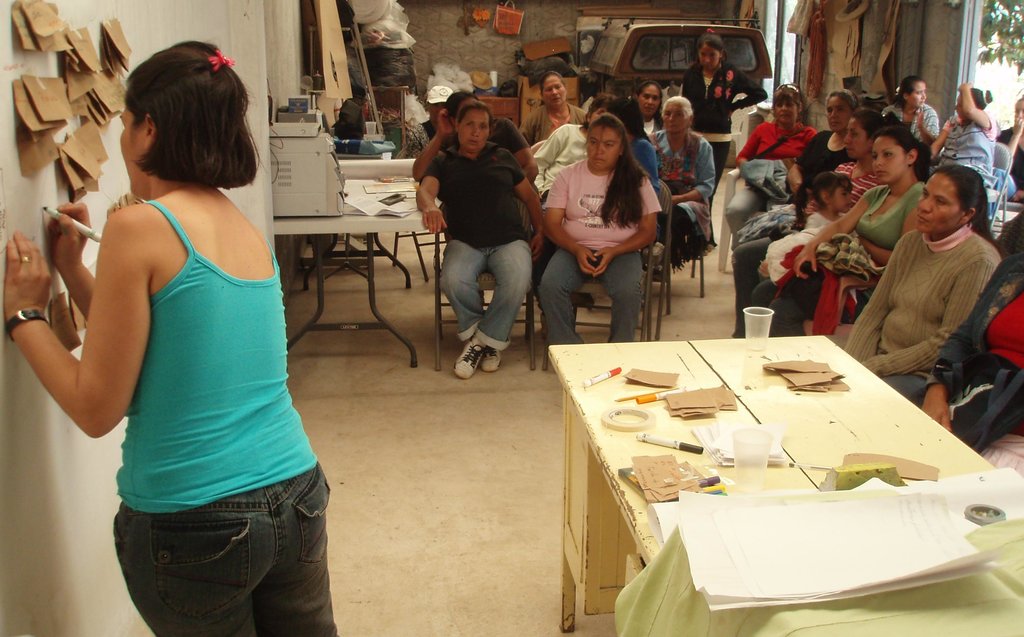Participative actions for economic benefits of agave forestry [México]
- Creación:
- Actualización:
- Compilador: Christian Prat
- Editor: –
- Revisor: Fabian Ottiger
Recuperación de tierras degradadas por agaveforestería a través de acciones participativas para beneficios económicos (Spanish)
approaches_2436 - México
Visualizar secciones
Expandir todo Colapsar todos1. Información general
1.2 Detalles de contacto de las personas de referencia e instituciones involucradas en la evaluación y la documentación del Enfoque
Especialista MST:
Martínez Palacios Alejandro
Tel (443) 334-0475, Ext. 119
apalacios56@gmail.com
Instituto de Investigaciones Agropecuarias y Forestales, Universidad Michoacana de San Nicolás de Hidalgo (IIAF-UMSNH)
Morelia-Zinapecuaro, Tarímbaro, Michoacán 58330, México
México
Especialista MST:
Ríos Patrón Eduardo
01 (443) 3226017
eduardo.rios@semarnat.gob.mx
Delegación de SEMARNAT (Secretaria del Medio Ambiente) en Michoacán, Unidad de Planeación y Política Ambienta
Morelia, Michoacán
México
Nombre del proyecto que facilitó la documentación/ evaluación del Enfoque (si fuera relevante)
DESIRE (EU-DES!RE)Nombre de la(s) institución(es) que facilitaron la documentación/ evaluación del Enfoque si fuera relevante)
Institut de recherche pour le développement IRD (Institut de recherche pour le développement IRD) - FranciaNombre de la(s) institución(es) que facilitaron la documentación/ evaluación del Enfoque si fuera relevante)
Instituto de Investigaciones Agropecuarias y Forestales (IIAF) - MéxicoNombre de la(s) institución(es) que facilitaron la documentación/ evaluación del Enfoque si fuera relevante)
SECRETARÍA DE MEDIO AMBIENTE Y RECURSOS NATURALES (SECRETARÍA DE MEDIO AMBIENTE Y RECURSOS NATURALES) - México1.3 Condiciones referidas al uso de datos documentados mediante WOCAT
El compilador y la/s persona(s) de referencia claves aceptan las condiciones acerca del uso de los datos documentados mediante WOCAT :
Sí
1.4 Referencia/s al/los Cuestionario(s) de Tecnologías MST
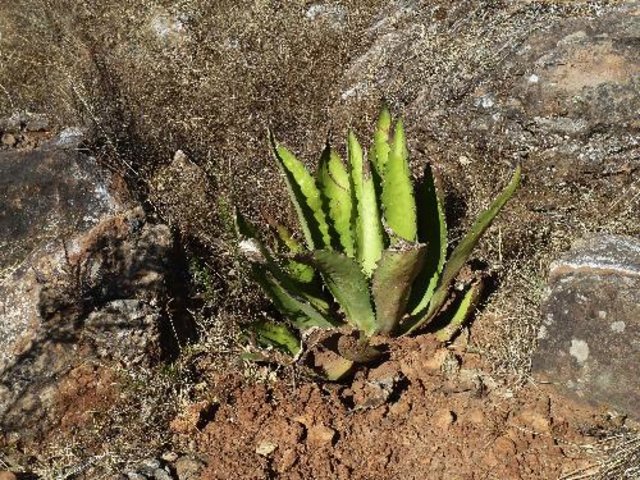
Land reclamation by agave forestry with native species [México]
Agave forestry land reclamation system with native agaves, trees, shrubs and grasses planted through participatory action for a sustainable production of mezcal and other products in order to generate high incomes for farmers.
- Compilador: Christian Prat
2. Descripción del Enfoque MST
2.1 Breve descripción del Enfoque
Land reclamation with local agave (to produce Mezcal) associated with trees, shrubs and grasses planted through participative actions for economic benefit.
2.2 Descripción detallada del Enfoque MST
Descripción detallada del Enfoque MST:
Aims / objectives: Rehabilitation of degraded land is achieved by using native agave (Agave inaequidens) and trees, shrubs and grasses which creates, over the medium-term (7-10 year), a sustainable production of an alcoholic drink (mezcal) and/or pharmaceutical products and/or fodder for cattle and/or wood. Further objectives are water conservation, biodiversity, generation of permanent employment (plant reproduction, planting, alcoholic drink/ pharmaceutical production), carbon sequestration, generation of higher family incomes and a reduction in the amount of livestock and number of animals and uncontrolled grazing (the main cause of soil erosion). These positive impacts of the approach contribute to preventing the rural population from emigrating to the cities or abroad.
Methods: Coordination, cooperation and systematic participatory process among stakeholders are the basis of the approach. Promoting participatory processes occurs through workshops, interviews with community leaders, field visits conducted with owners of the land to recognize the problems and identify areas of opportunity, training courses, exchange of experiences with other people who are developing similar projects at different stages. Technical advice and the links with scientists, technicians and public officials in charge of project beneficiaries is given under a two-way process of mutual learning and seeking to strengthen self-management capabilities that inspires innovation at the different stages. The key to success of a participatory approach lies in liberating and developing community leadership and self-organization processes.
Stages of implementation: The project is part of a regional planning context and a basin scale approach of intervention. The watershed of the site project is included in a special programme of the Ministry of Environment and Natural Resources of Mexico which gives the opportunity of developing and financing a medium- to long-term project. The participatory process is delivered from planning, organizing, programming and implementing to financing, training, monitoring and disseminating the results. The strategic perspective of the project includes capacity-building of land owners for greenhouse and nursery management, the technical assessment for the improvement of the agave forestry system, guidance with quality production of mezcal and marketing support to diversify products and sell them in order to make the project financially self-sustaining and profitable. All these stages range from short- to medium- and long-term.
Role of stakeholders: The government finances the project through grant resources, promotes the participation of beneficiaries and monitors it, seeking the management of resources and intersectoral participation. Scientists and academics share their knowledge, techniques and methodologies for implementation, improvement, evaluation and monitoring of each stage, and they support capacity-building of the community. The owners of the land and the community implement and develop each of the activities from building and maintaining the greenhouse and nursery, planting agaves, trees and shrubs, to the use and production of mezcal and other commercial products.
2.3 Fotos del Enfoque
2.5 País/ región/ lugares donde el Enfoque fue aplicado
País:
México
Región/ Estado/ Provincia:
Mexico/Michoacán state
Especifique más el lugar :
Morelia
Map
×2.6 Fechas de inicio y conclusión del Enfoque
Indique año del inicio:
2009
Año de conclusión (si el Enfoque ya no se aplica):
2012
2.7 Tipo de Enfoque
- Traditional, innovative and project based
2.8 Propósitos/ objetivos principales del Enfoque
The Approach focused mainly on other activities than SLM (registered alcohol production, cattle fodder, medicine uses, biodiversity conservation, wood)
Rehabilitation of degraded land is done using native agave (Agave inaequidens), trees, shrubs and grasses which creates, over the medium-term (7-10 years) sustainable production of an alcoholic drink (mezcal) and/or pharmaceutical products and/or fodder for cattle and/or wood.
The SLM Approach addressed the following problems: Social and economic problems: Agriculture and livestock in the region are primarily for subsistence. The level of poverty and marginalization of the people of the project site is medium to high with low education levels. People need to migrate to the cities or outside the country to supplement the family budget. Prices of farmer productions are too low and do not allow economic survival. Therefore, only 10 to 20% of the total incomes are derived from agricultural products! This explains why the children of farmers do not want to become farmers and lands are less and less cultivated. In correlation, as the livestock price is good and animals can be raised with little input of time. Thus the number of animals is increasing and as they are grazing everywhere, they have a strong soil erosion impact.
2.9 Condiciones que facilitan o impiden la implementación de la/s Tecnología/s aplicadas bajo el Enfoque
normas y valores sociales/ culturales/ religiosos
- impiden
The social arrangement of the “ejido” requires all people to agree on moving forward with different activities. The level of education and migration.
Treatment through the SLM Approach: Systematic and constant promotion of the participatory process through community assembly meetings, workshops, community exchange travel, experiences and training. Promote complementarity and targeting of resources from other sectors.
disponibilidad/ acceso a recursos y servicios financieros
- impiden
Potential constraints in the final stages of the project when receiving revenue from the sale of mezcal and other products.
Treatment through the SLM Approach: Strengthening capacities of organization and administration, promoting transparency and accountability in the community. Development and consolidation of the formation of cooperatives as an alternative to social enterprise.
entorno institucional
- impiden
The risk that the six-year change in administration does not follow the care programme in the area.
Treatment through the SLM Approach: Strengthening self-management capabilities of the group of beneficiaries of the project. Involving other government levels and sectors funding training and monitoring of subsequent stages.
marco de trabajo legal (tenencia de tierra, derechos de uso de tierra y agua)
- facilitan
The existing land ownership, land use rights / water rights greatly helped the approach implementation
- impiden
Federal, state and municipal regulations for preventing clearance of woods, biodiversity uses, forest exploitation, water concessions and water quality must be applied. Mexican official standards of mezcal production must be used
Treatment through the SLM Approach: Conduct a thorough review with a focus on prospective different stages of a project and the legal implications and regulations that must be met at these stages. Inform land owners about their rights, obligations and mechanisms of fulfilment.
conocimiento de MST, acceso a apoyo técnico
- impiden
Lack of validation and technology transfer of agave forestry. Lack of information on the requirements of these species of agave. Potential risk to move from non-intensive system to an intensive one due to economic and market factors.
Treatment through the SLM Approach: Development of technological packages for an agave forestry system as a basis for the production of mezcal, considering soil erosion levels and system arrangements. Promote only ecologically diversified, non-intensive systems. Design environmental and ecological monitoring stage.
3. Participación y roles de las partes interesadas involucradas
3.1 Partes interesadas involucradas en el Enfoque y sus roles
- usuarios locales de tierras/ comunidades locales
Traditionally, women have been more responsible for the house and the area close to it. They are less involved in the field activities of the agave forestry project, but are involved in production and commercialization. On the other hand, women are worried about the possible impacts of alcoholic drink on communities, because alcoholism is a social concern. There has been no discrimination inside the communities up to now
- especialistas MST/consejeros agrícolas
- profesores/ niños en edad escolar/ estudiantes
- sector privado
- gobierno local
- gobierno nacional (planificadores, autoridades)
- organización internacional
- administration and authorities; women
3.2 Involucramiento de los usuarios locales de tierras/ comunidades locales en las distintas fases del Enfoque
| Involucramiento de los usuarios locales de tierras/ comunidades locales | Especifique quién se involucró y describa las actividades | |
|---|---|---|
| iniciación/ motivación | auto-movilización | Balance alternatives and take decision to test the agave forestry |
| planificación | interactivo | Planning, organizing and programming the project, defining responsibilities, time and initial investment. Identification of agave seeds and a proper place to install the greenhouse and nursery. |
| implementación | auto-movilización | Building and maintenance of greenhouse and nursery, selecting the sites for the plantation and planting. Training of land users by other land users to produce mescal according to quality rules for a recognized product. |
| monitoreo y evaluación | auto-movilización | In each field: monitoring plant growth, status of the protection against cattle grazing, indications of soil erosion. |
| Research | interactivo | Monitoring by some land users of some parameters defined by scientists. |
3.3 Flujograma (si estuviera disponible)
Descripción:
Workshop with women from eight rural communities of the Calabozo - Potrerillos watershed. They are defining their problems and proposing solutions. EU-DESIRE project and small catchments SEMARNAT project, San Rafael Coapa community, Morelia municipality, April 2010
Autor:
Christian Prat
3.4 La toma de decisiones en la selección de Tecnología(s) MST
Las decisiones para la selección de la/s Tecnología(s) fueron tomadas:
- all of them
Explique:
It is the result of proposals, visits and discussions between all the stakeholders, so it is a joint decision.
Decisions on the method of implementing the SLM Technology were made by all of them. It is the result of proposals, visits and discussions between all the stakeholders, so it is a joint decision.
4. Apoyo técnico, fortalecimiento institucional y gestión del conocimiento
4.1 Construcción de capacidades / capacitación
¿Se proporcionó la capacitación a usuarios de tierras/ otras partes interesadas?
Sí
Especifique quién fue capacitado:
- usuarios de tierras
- personal de campo/ consejeros
Forma de capacitación:
- en el contexto de trabajo
- reuniones públicas
Temas avanzados:
Training focused on explaining which plants to select for seeds, how to create and maintain plants in greenhouses, how to transplant them and how to organise their planting in the field depending on the aim (scattered for production or in rows to create a green barrier formed from trees, shrubs, grasses and agaves)
4.2 Servicio de asesoría
¿Los usuarios de tierras tienen acceso a un servicio de asesoría?
Sí
Especifique si servicio proporcionado se realizó:
- en los campos de los usuarios de tierras
Describa/ comentarios:
Name of method used for advisory service: Plant (native agave, trees, shrubs, grasses) production advises; Key elements: Plant selection, Management of plants under greenhouse
Advisory service is very adequate to ensure the continuation of land conservation activities
4.3 Fortalecimiento institucional (desarrollo institucional)
¿Se establecieron o fortalecieron instituciones mediante el Enfoque?
- sí, mucho
Especifique el nivel o los niveles en los que se fortalecieron o establecieron las instituciones:
- local
Especifique el tipo de apoyo:
- financiero
- construcción de capacidades/ entrenamiento
- equipo
- transport
4.4 Monitoreo y evaluación
¿El monitoreo y la evaluación forman parte del Enfoque?
Sí
Comentarios:
bio-physical aspects were regular monitored by project staff, government, land users through observations; indicators: Biodiversity, water quality, water usage, degradation and soil rehabilitation indicators.
bio-physical aspects were regular monitored by project staff, government through measurements; indicators: Participatory collection of data by landowners, public officials and technicians.
technical aspects were regular monitored by project staff, government, land users through observations; indicators: Indicators of improvement of technical capabilities of the nursery operators, capacity building for the production of mezcal and other products and comparative indicators of different arrangements of agrosystems based on other biophysical and economic indicators.
socio-cultural aspects were regular monitored by project staff, government through measurements; indicators: Migration, poverty, education indicators by surveys and statistical models
economic / production aspects were regular monitored by project staff, government through measurements; indicators: Indicators of profitability, revenue from each stage per person, economic valuation of soil improvement
area treated aspects were regular monitored by project staff, government through measurements
There were no changes in the Approach as a result of monitoring and evaluation
There were no changes in the Technology as a result of monitoring and evaluation
4.5 Investigación
¿La investigación formó parte del Enfoque?
Sí
Especifique los temas:
- economía/ marketing
- ecología
- tecnología
Proporcione detalles adicionales e indique quién hizo la investigación:
No information exists about the production conditions of this agave species, especially concerning the sugar quantity and quality produced by the plant which will be used for alcoholic drink production (e.g. whether it grows better in the shade or in full sunlight, or more appropriate for mature or young plants).
Research was carried out on station
5. Financiamiento y apoyo material externo
5.1 Presupuesto anual para el componente MST del Enfoque
Si no se conoce el presupuesto anual preciso, indique el rango:
- 2,000-10,000
Comentarios (ej. fuentes principales de financiamiento/ donantes principales):
Approach costs were met by the following donors: government (estimated budget by ha, without alcoholic drink production ): 80.0%; local government (district, county, municipality, village etc): 10.0%; local community / land user(s): 10.0%; other
5.2 Apoyo financiero/material proporcionado a los usuarios de tierras
¿Los usuarios de tierras recibieron financiamiento/ apoyo material para implementar la Tecnología/ Tecnologías? :
Sí
5.3 Subsidios para insumos específicos (incluyendo mano de obra)
- equipo
| Especifique qué insumos se subsidiaron | En qué grado | Especifique los subsidios |
|---|---|---|
| herramientas | parcialmente financiado | shovel, hammer, pickaxe |
- agrícola
| Especifique qué insumos se subsidiaron | En qué grado | Especifique los subsidios |
|---|---|---|
| plastic bags for plants, soil, compost | parcialmente financiado | |
- construcción
| Especifique qué insumos se subsidiaron | En qué grado | Especifique los subsidios |
|---|---|---|
| piedra | parcialmente financiado | |
| madera | parcialmente financiado | |
| metal tube, plastic for greenhouse | parcialmente financiado | |
5.4 Crédito
¿Se proporcionó crédito bajo el Enfoque para actividades MST?
No
6. Análisis de impacto y comentarios de conclusión
6.1 Impactos del Enfoque
¿El Enfoque ayudó a los usuarios de tierras a implementar y mantener Tecnologías MST?
- No
- Sí, un poco
- Sí, moderadamente
- Sí, mucho
it is a new and easily-implemented technology with a high economic potential (commercialisation of products of very high value)
it is too early to judge, but it is supposed to improve it
6.2 Motivación principal del usuario de la tierra para implementar MST
- producción incrementada
- incremento de la renta(bilidad), proporción mejorada de costo-beneficio
- pagos/ subsidios
- conciencia medioambiental
- well-being and livelihoods improvement
6.3 Sostenibilidad de las actividades del Enfoque
¿Pueden los usuarios de tierras sostener lo que se implementó mediante el Enfoque (sin apoyo externo)?
- sí
6.4 Fortalezas/ ventajas del Enfoque
| Fuerzas/ ventajas/ oportunidades desde la perspectiva del usuario de la tierra |
|---|
| The project is done in a participative way where different kinds of stakeholders are involved: administrators, politicians, scientists and the public. (How to sustain/ enhance this strength: maintenance of the interaction between stakeholders from the workshops, present results to other authorities and appropriate fora.) |
| Fuerzas/ ventajas/ oportunidades desde la perspectiva del compilador o de otra persona de referencia clave |
|---|
| Productive project which generates economic benefits over the medium-term (How to sustain/ enhance this strength: as a result of the money earned, it will be possible to extend the area concerned and subsides will not be necessary anymore ) |
6.5 Debilidades/ desventajas del Enfoque y formas de sobreponerse a ellos
| Debilidades/ desventajas/ riesgos desde la perspectiva del usuario de la tierra | ¿Cómo sobreponerse a ellas? |
|---|---|
| Women particularly, are worried about the possibility of the increase in alcohol consumption | since alcoholic drink will be produced in a semi-industrial way for the external market, it is not supposed to be consumed by the communities themselves |
| Debilidades/ desventajas/ riesgos desde la perspectiva del compilador o de otra persona de referencia clave | ¿Cómo sobreponerse a ellas? |
|---|---|
| Selling alcoholic drink is not necessarily beneficial from a health and societal point of view | maintenance of a campaign to reduce consumption and develop a responsible attitude to alcohol |
7. Referencias y vínculos
7.1 Métodos/ fuentes de información
- visitas de campo, encuestas de campo
- entrevistas con usuarios de tierras
7.2 Referencias a publicaciones disponibles
Título, autor, año, ISBN:
DESIRE project Mexico partner (IRD 22)
¿Dónde se halla disponible? ¿Costo?
http://www.desire-project.eu/ free
Vínculos y módulos
Expandir todo Colapsar todosVínculos

Land reclamation by agave forestry with native species [México]
Agave forestry land reclamation system with native agaves, trees, shrubs and grasses planted through participatory action for a sustainable production of mezcal and other products in order to generate high incomes for farmers.
- Compilador: Christian Prat
Módulos
No se hallaron módulos


